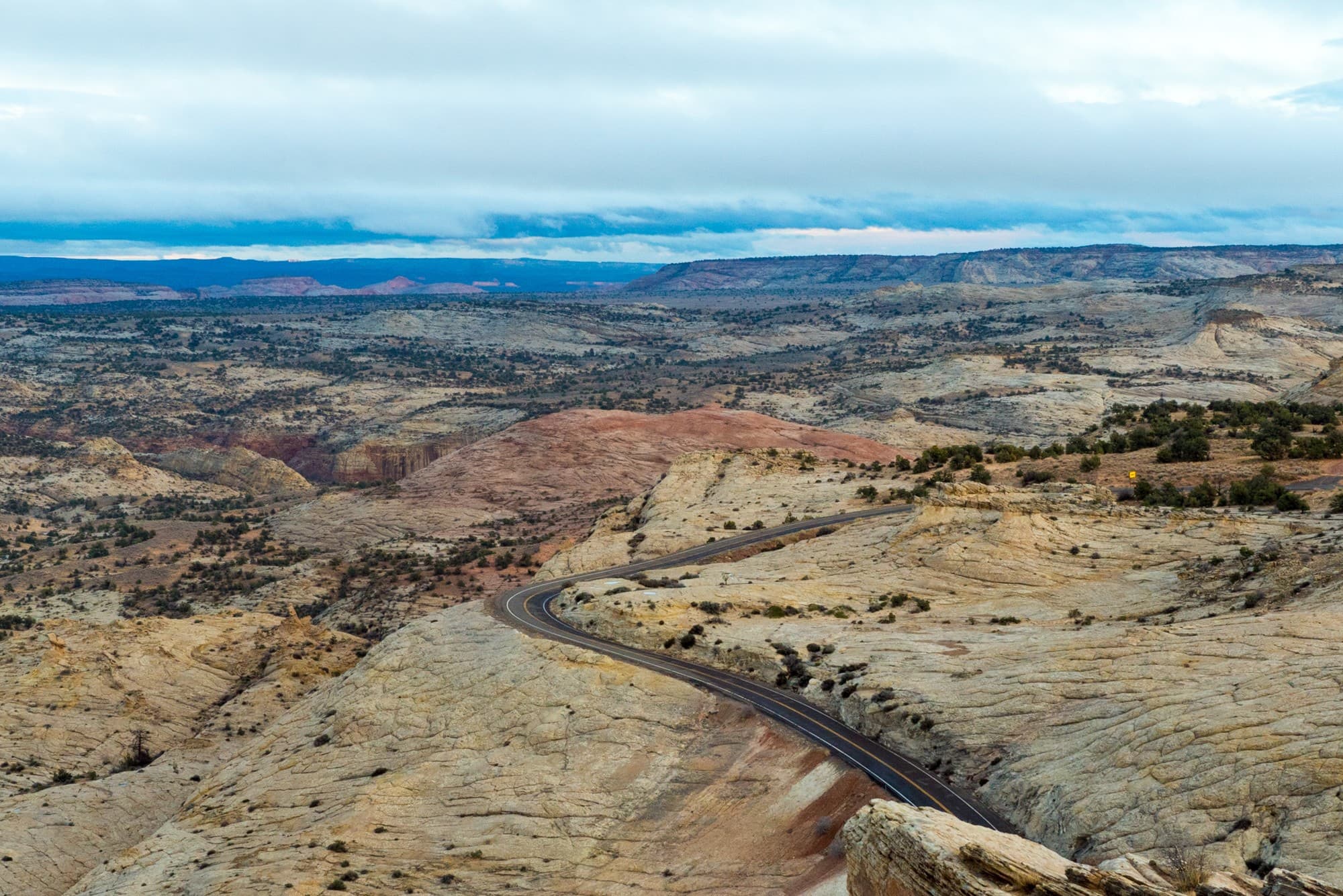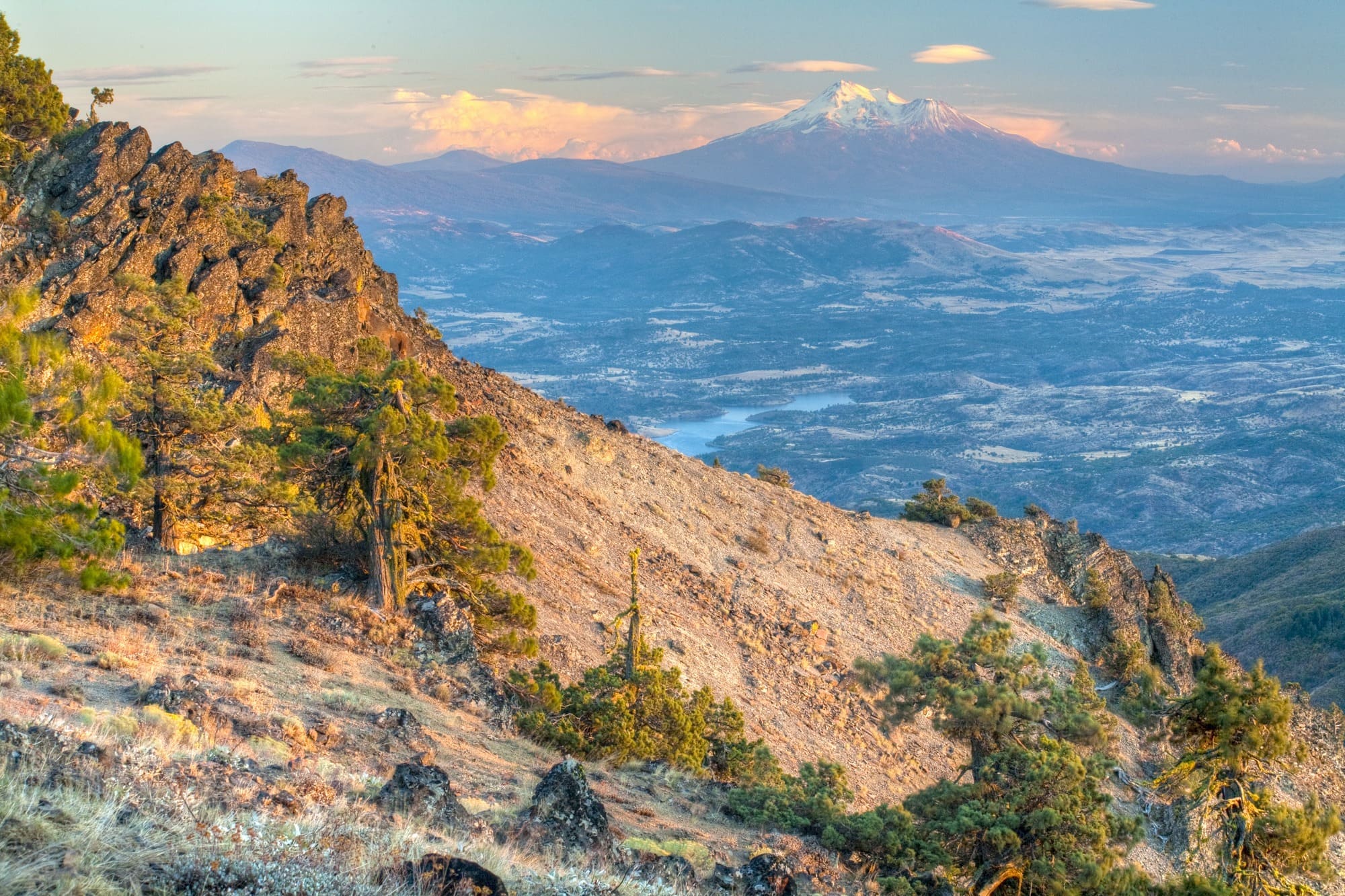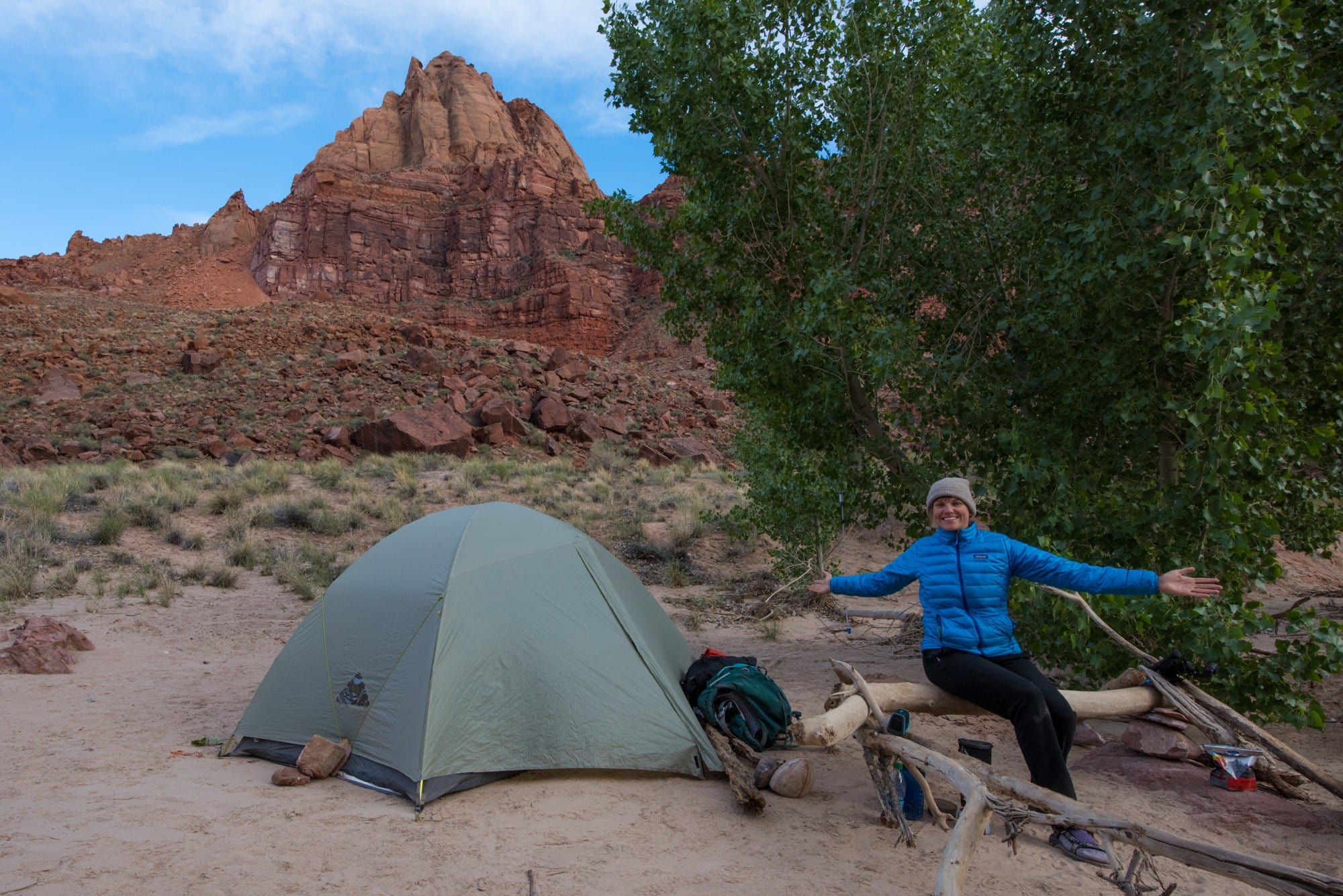What is a National Monument & why should you care?
Make your voice heard! Learn how national monuments are established, the details of President Trump’s National Monument Review & how to submit your comments.

WHAT IS A NATIONAL MONUMENT & WHY SHOULD YOU CARE?
Intro by Kristen Bor / Post by Alina Werth
(Above photo: Bears Ears National Monument, BLM)
There has been a lot talk of National Monuments these days, but sometimes the nitty gritty details and FACTS get lost in all of the headlines. So what is a National Monument? And why should you care about them?
Today is June 8, the anniversary of the Antiquities Act – the law that gives Presidents the authority to establish National Monuments and has been used to protect some of America’s most treasured lands, including the Grand Canyon, Zion, Bryce, and Grand Teton National Park, to name a few.
The Antiquities Act was also used to establish Grand Staircase-Escalante National Monument, one of the best places in Southern Utah for outdoor recreation, and where I first fell in love with the desert. It’s where I discovered “dispersed camping,” where I explored my first slot canyon, and where I realized how colorful and full of life the desert can be.Grand Staircase-Escalante is also one of the few dog-friendly places in Southern Utah, and rarely do you have to compete for a permit.
Grand Staircase-Escalante is THE reason I moved to Salt Lake.

Grand Staircase-Escalante, as well as 26 other National Monuments, are currently under review by the Trump administration to see if they should be reduced in size or eliminated all together, and it’s imperative that the public weigh in during the open comment period.
Curious what this debate is all about? Today I’m joining a group of online writers in a “Monumental Day of Blogging” to help clear up the debate and to encourage you to make your voice heard, loud and clear.
In this blog post below written by Alina Werth, Bearfoot Theory’s environmental issues expert, we talk about where and how national monuments get designated, why you should care, and how to weigh in.
And one last note from me…these public lands belong to YOU, whether you live in Georgia, Kansas, or Salt Lake City. Once they are sold off to oil and mining interests, we will never get them back. No more driving down isolated dirt roads to find a cool off the beaten path campsite, no more hiking access. Instead it will be trespassing. Even if you haven’t visited one of these monuments yet, this review means you and your kids may never have the chance. Please take one minute today to submit your comments. Tell a story about what public lands mean to you and why you oppose these shortsighted actions. Thanks! -Kristen-
[separator style_type=”icon” /]
What is a National Monument?
A National Monument is an area of federal land that has a historic landmark, structure or other object of historic or scientific interest on its premise and has been given permanent protection by the government. National monument sites are home to everything from petroglyphs, to endangered wildlife, dinosaur bones, unparalleled recreational opportunities, and landscapes found nowhere else.
A National Monument does not necessarily have to be a piece of land either. Structures, such as the Statue of Liberty, and areas in the ocean, like the Marianas Trench, are designated National Monuments as well. National Monuments play a particularly important role in maintaining the integrity of archaeological sites in the American West and preserving important Native American artifacts.

[separator style_type=”single” /]
What kind of land is eligible for National Monument status?
In recent news, you may have heard of these monuments referred to as a “federal land grab.” This is incorrect. A National Monument can only be designated on public land that is already owned by the federal government.
A President CANNOT establish a monument on privately owned land or land owned by the state.

[separator style_type=”single” /]
What is the process for establishing National Monuments?
Since 1906, every single President with the exception of Reagan, has exercised the power to designate at least one National Monument, and today, there are over 100 National Monuments.
While a President does have the authority to unilaterally designate a National Monument, it is rare for a President to do so without a lot of public and local support for the designation. Most monuments go through years of public comment, proposals, and legislative efforts before they are designated as monuments. Often Presidents make their designations at the end of their Presidential term as a way to leave a legacy.
Sure, there have been designations that have been more controversial than others.Grand Staircase-Escalante National Monument, which was established by President Clinton in 1996, was one of them. Eleven years later, however, the town of Escalante is seeing record number of tourists and the local Chamber of Commerce supports maintaining its monument designation.
Bears Ears, the newest National Monument in southeastern Utah established by President Obama, is also a major target of President Trump’s executive order. The effort to protect Bears Ears officially started in 2010, led by Utah’s Navajo Tribe. In 2015, the Navajo Tribe was joined by 5 other southern Utah tribes to form the Bears Ears Inter-Tribal Coalition. Their collective goal is to advocate for the protection of 1.9 million acres of land and over 10,000 Native American archeological artifacts. For a full-run down of the history of Bears Ears, see this article.
Critics who believe there are too many National Monuments and want federal land given over to the states point to a particular part of the Antiquities Act that says a National Monument must be created on the smallest amount of land necessary to serve its function. This is the clause being used to justify the National Monument review.

[separator style_type=”single” /]
What activities are allowed in National Monuments?
National Monument status doesn’t change who owns or manages the land. Instead, it limits what people can do on that land. However, with most designations, there are efforts to respect any “existing rights.” This means that whatever development is already present is allowed to continue for the terms of the current lease. This includes oil and gas leases, roads, public utilities, mining claims, and livestock grazing. A designation does, however, mean that when a lease on a National Monument expires it might be more difficult to renew.
National Monuments support all types of recreational activities including hiking, biking, camping, backpacking, hunting, fishing, horseback riding, and the use of motorized vehicles in designated places.

Studies have shown that these recreational activities attract tourists to the towns surrounding National Monuments and boost the rural economy by allowing new businesses to exist or expand. For example, outfitters often crop up around National Monuments to support the variety of recreational activities. Tourists visiting National Monuments also require amenities like restaurants, hotels, coffee shops, and stores. The communities on the outskirts of National Monuments come to be known as “gateway communities” and benefit from this increase in tourism. For example, in the town of Escalante, from 2001-2015, the number of jobs grew by 24%.
It is not uncommon for National Monuments to eventually become National Parks as well. For example, the Grand Canyon was first designated a National Monument by Teddy Roosevelt in 1908. At the time, a mining company in the region sued the federal government over the designation arguing it didn’t make sense to save an entire canyon. If Roosevelt hadn’t set aside the entire canyon, there’s no telling what it would be like today. National Parks are an important American legacy, source of country pride, and well-traveled tourist destinations. National Monuments have played a vital role in the ability to save such places.
[separator style_type=”single” /]
What is the National Monument Review?
Currently, there are over 100 protected areas designated as National Monuments and 27 of them are under review by the Trump Administration. Twenty-two of these are land-based monuments, and 5 are ocean-based monuments. These 27 monuments were designated by the three previous presidents: Barack Obama, George W. Bush, and Bill Clinton.
Through an Executive Order, President Trump has asked the Department of the Interior to review “certain National Monuments designated or expanded since 1996” in part to ensure that they “appropriately balance the protection of landmarks, structures, and objects against the appropriate use of Federal lands and the effects on surrounding lands and communities.”
While we don’t know what will happen as a result of the review, there are signs that the outcome of the review may be somewhat pre-determined. If the Trump administration decides to reduce in size or eliminate a National Monument, which is unprecedented, it is likely that lawsuits will be brought forth. Either way, initiating this review process opens up the possibility of this land being sold off to oil, gas, and mining interests. And once our public lands are no longer public, we will never get them back.

[separator style_type=”single” /]
What can you do to support our National Monuments?
Currently there is a comment period open through July 10 where you can voice your opinion about the National Monument review.
Submitting comments only takes a few minutes, and all you have to do is click the button below. This will take you to the Monuments For All website, a group that is collecting comments for the public record. Remember, these comments are much more effective if they are personalized, so make an effort to alter the language and tell Secretary Zinke why you support the monument designations under review.
[button link=”http://monumentsforall.org/”]
Voice your support for our monuments now!
[/button]
[separator style_type=”single” /]
HAVE YOU VISITED A NATIONAL MONUMENT? TELL US ABOUT IT IN THE COMMENTS BELOW!
[content_box title=”Read Next”]3 Awesome Hikes in Escalante National Monument
Paria Canyon Backpacking Photos
The Impact of Climate Change on Outdoor Recreation
The Top Environmental Groups you should know[/content_box]


This is a great summary of why national monuments are significant to our nation’s story. Please consider using the proper name of the monument (Grand Staircase-Escalantr NM). I think that when blogs and writers don’t fact check simple things like the names of the places they right about, it can diminish their credibility. Thanks again for the informative piece!
Thanks! I went ahead and updated.
Hi Kristen –
I’ve visited a few National Monuments but there are still so many to see. Thanks for joining in on posting about National Monuments to help spread awareness. I think there are a lot of people not even aware of places near them. To add to this awareness, I also posted today: New York National Monuments. I think so many people here in NYC don’t realize we have a few easily accessible National Monuments! Keep spreading the awareness!
http://bit.ly/NYorkNM
-Rachel @ Backcountry Petite
This was such a great read! Thank you for breaking down this topic so well. Everyone needs to read this to understand exactly what is at stake and what this all means.
I also fell in love with Escalante. Having a dog it’s so nice to be able to have amazing places like this that are dog-friendly (one reason I often look for National Monuments and Lands over Parks!)
Great post ladies!
–Katie @ Katie Wanders
http://www.KatieWanders.com
and for the other side of the coin which in my opinion is not really represented in Kristen’s write up here, please read a very short article. http://www.heritage.org/environment/report/the-antiquated-act-time-repeal-the-antiquities-act
Just because we all love the outdoors doesn’t mean that National Monument designations are a great way to enjoy them or that they are even fair. I love liberty and the outdoors, so I believe the rights of states and people should be respected first and foremost. This article also mentions the degradation of the environment under federal control. We all can agree protecting the land is a priority right?
Thanks.
Chuck – I appreciate you chiming in. You argue that the feds have a backlog, which they do…but there is little evidence that states can afford to takeover all of this land. And that’s where private interests, like mining and oil, come in to take over. Local communities do benefit from increased tourism and there are many studies that prove the one you cite wrong: https://headwaterseconomics.org/public-lands/protected-lands/national-monuments/
In addition to increased revenue from tourism, a lot of rural communities surrounding these monuments receive Payments in Lieu of Taxes from the feds to help offset any losses in property taxes they would receive if the land were instead owned by the state. https://www.doi.gov/pilt In 2016, Utah received $38 million from the feds through this program and loss of this payment would be catastrophic for rural communities.
Finally, on the Heritage organization’s website it says their mission is “to formulate and promote conservative public policies”…so there is some bias inherit in the article you cite.
I appreciate the healthy debate, and I know not everyone agrees with me. However, on my website, I share my favorite places, many of them in national monuments, so I feel I have a responsibility to share my thoughts and shed light on the facts.
Thank you for responding in a very nice manner which most blog owners do not. Try this on Modern Hiker for example and you will get banned.
It is true local gateway towns may in fact see economic boon, but we will never know what kind of economic activity would have taken place if the land had more private owners. Patagonia and others have a vested interest in promoting more govt owned land, so I don’t trust the vendors, anymore than you trust energy companies.
The notion that the federal government knows best how to use land and locals and states do not is offensive but typical. I don’t think I should have a say in Utah’s lands because I don’t live there like I believe you do?
It is also troubling that a president “could” in fact take private land. Most don’t like Trump. I didn’t vote for him, so it is important not to give the president too much power as we never know what the next one will be like.
Regardless of differing opinions thank you for a wonderful site I will continue to enjoy. Thank you.
This piece is EXCELLENT, and so informative! Really appreciate your recording all of this, and looking forward to sharing it all over the place!
Great article! We were recently in southern Utah at the national parks and drive through the Escalante area. The locals seem highly committed to keeping the monument and were having a Save the Monument meeting on the day we drive through. One local I spoke to was dismayed that Secretary Zinke didn’t seek out their input. He then gave me some postcards and implored me to contact my reps. I honestly hope the voices in support of our public lands are loud enough to reach through cacophany of special interests and dark money.
There are two things that impact every ones life regardless. First is politics and second economics. Can’t be escaped. With either there are no hard fast rules. There are always two sides to an argument ( at least ). I know that I don’t trust politicians regardless of party. I also know I don’t trust special interest groups. It seems to be harder for issues to be resolved in an equitable manner these days. Each side seems to treat the issues as black and white, my way or the hiway, that’s not the way things are settled. I believe answers are arrived at when all parties make an effort to do what’s best for the country and all its people. My 2 cents.
After reading this, another adventure is calling me. Thanks Alina for this wonderful post.
I liked that you said that one thing to consider when you are wanting national monuments to continue to thrive is to support them and promote their use. I have been trying to find ways to help promote the longevity of monuments but I haven’t been sure how to do this. I will be sure to consider finding supportive communities in which to vote for the longevity of these monuments.